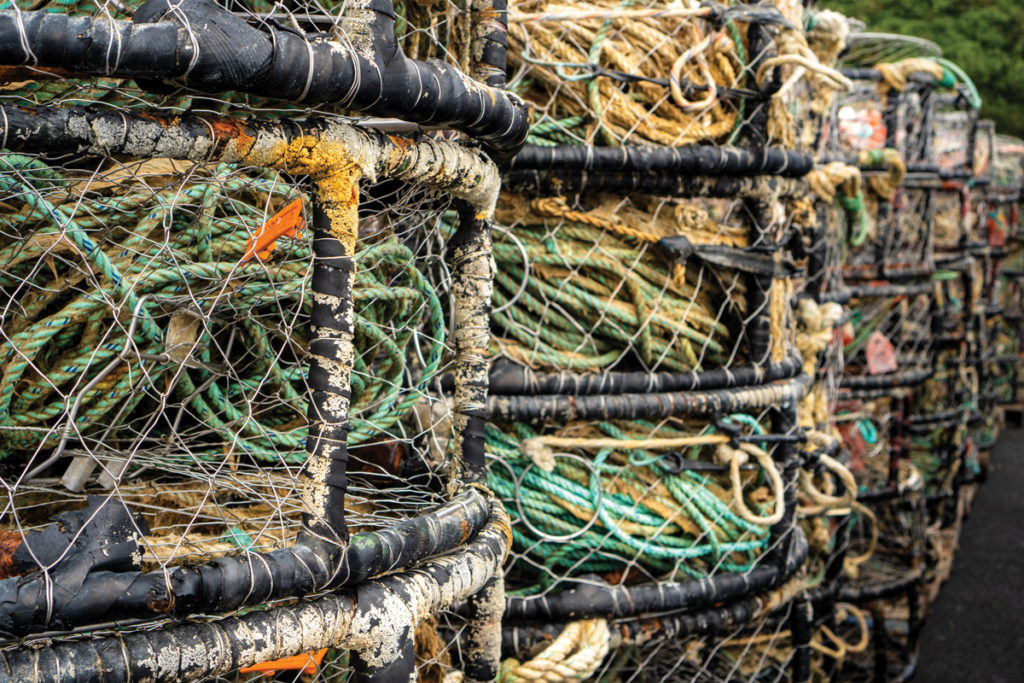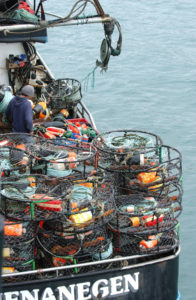
By MOLLY ROSBACH/OSU News Service
A team of Oregon State University researchers will use a new, three-year $895,000 federal grant to study how different equipment configurations onboard crab vessels could help prevent injury to crabbers.
The grant from the National Institute for Occupational Safety and Health will allow OSU professors Jay Kim and Laurel Kincl to build on existing research with the Dungeness crab fishing industry, where workers suffer high rates of both fatal and non-fatal injuries.
The Dungeness crab fishery is an important economic driver throughout much of the West Coast of the United States. In Oregon, the fishery is usually the most valuable single-species fishery, bringing in $33 million to $75 million a year, according to the Oregon Dungeness Crab Commission.
For their upcoming study, Kim and Kincl will look specifically at the configuration of the “block,” the mechanized winch that pulls up the line of crab pots out of the water and swings them into the boat; and the crab sorting table, where crabs are sorted after being brought up from the water.

Some crab fishing vessels have blocks that swing outwards, requiring workers to reach farther over the water to reach the line when they’re hauling in the crab pots. This can not only lead to shoulder and back injuries, but can also increase the risk of someone falling overboard.
There is no industry standard for design specifications such as the height of the crab sorting table, so the researchers hope to learn if specific heights could help reduce injuries to the lower back and shoulders.
All of the configurations Kim and Kincl will be testing are ideas they have observed on different crab fishing boats during their previous and current NIOSH-funded studies, as individual vessels choose the setup that works best for them.
“We’re taking the existing equipment that the fishermen use, and aim to provide them with relevant information so they can make informed decisions based on the impacts these different configurations can have,” said Kincl, an associate professor in OSU’s College of Public Health and Human Sciences who studies occupational health and safety.
There are about 3,200 workers in the Dungeness crab fleet in the Pacific Northwest. The most common injuries for crabbers affect the shoulders and arms: overexertion, sprains, strains, and traumatic injuries like breaks and fractures. Falls overboard and vessel disasters are rare, but due to the relatively small pool of workers, the fatality rate for Dungeness crab fishing is several times higher than the national rate for commercial fishing.
Inspired by the insight of commercial fishermen in the research team’s previous projects, Kim and Kincl will more formally develop an expert pool of stakeholders who can share real-life, firsthand knowledge of different boat designs and practices.
“We invited the fishermen and the fabricators to the lab, and not only do we plan to provide information to help reduce injuries, but they in turn contribute to how we conduct the studies,” said Kim, an assistant professor who directs OSU’s Occupational Ergonomics and Biomechanics lab. “It has actually helped us to lower the barriers between researchers and fishermen.”
Once Kim and Kincl have determined which block and sorting table configurations are most beneficial, they’ll be able to work with their expert pool on how best to convey that information back to vessel owners, captains, fabricators and workers in the crab fishing industry.
“Dungeness crab is the highest-commodity fishery in Oregon; you can make a good living off it,” Kincl said. “We want to keep them fishing.”




















